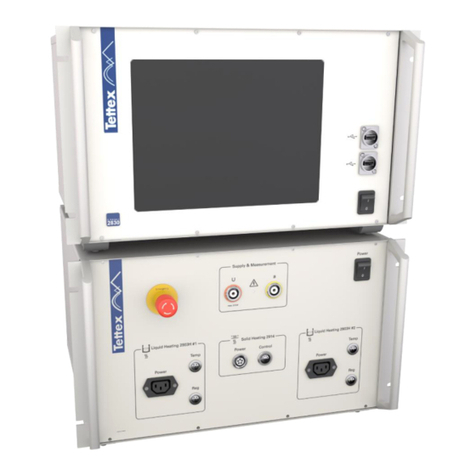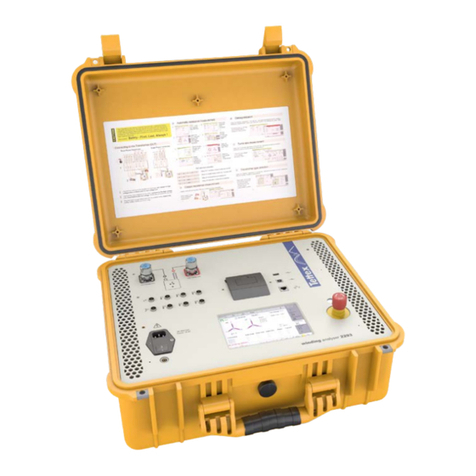
3 Safety
1. Safety
General
The “Operating Instructions” must be read and fully understood before operating this instrument. All tests
should be performed with the device under test completely disconnected from its power systems and fully
de-energized. This means all bus connections to and from the device under test must be removed.
Remember: Safety - First, Last, Always !
This quick start guide is not a replacement of the instrument manual.
This equipment contains exposed terminals carrying hazardous voltages. There are no
user serviceable components in the unit. All repairs and upgrades that require the unit to
be opened must be referred to HAEFELY TEST AG or one of their nominated agents.
This equipment must be operated only by trained and competent personnel who are aware
of the dangers and hazards involved in testing transformers and other HV apparatus.
HAEFELY TEST AG accepts no liability for loss, damage, injury or death caused by the
incorrect or unsafe operation of this instrument.
Grounding
The instrument must always be connected to a grounded power outlet (i.e. a safety earth)
before connecting to the to the high-voltage test system.
It must never be operated in a non-grounded configuration as this may result in electrical
shock to the user or damage to the instrument.
Always Use grounding rods when entering the high-voltage test area.
Be aware that when disconnecting the measuring input cable from the equipment you are
virtually “touching” the high-voltage divider output which might be under high voltage.
Always disconnect a measuring cable on the divider side FIRST!
Mains Connection
Connection of the system to a supply voltage outside the specified operating range will
result in damage to the system along with the risk of injury and fire.
Essential Safety Recommendations
Before connecting the instrument ensure that the HV capacitor is completely de-energized,
isolated from the load and grounded. Every terminal shall be checked and verified before
connecting the instrument. Ground connections may remain in place.





























